| Emergency
Preparedness and Response |
| Environmental
Health concerns in the aftermath of an emergency include shelter safety,
drinking water safety, food safety, sewage disposal, residential safety
and clean-up, and solid waste disposal. |
| Emergency
Planning |
| The
key to surviving and staying comfortable during an emergency is preparation.
The
Skagit County Department of Emergency Management provides planning
tools to help you and your family stay prepared for a flood, earthquake,
or other disaster. The
Centers for Disease Control and Prevention is an excellent resource
for emergency preparedness and response information. |
| Shelter
Safety |
| The
American Red Cross opens and operates shelters in Skagit County as
needed during emergencies. Shelter locations are determined during
the emergency specific to the needs of the impacted population. The
Red Cross has a search tool to help you locate open shelters .
Environmental
Health Specialists from the Health Department work with the Red
Cross and inspect open shelters during their operations for food
safety and general health and sanitation management.
|
| Drinking
Water Safety |
Emergency
events such as power outages, floods, and earthquakes often impact
drinking water systems. It is very important to understand the status
of your drinking water after an emergency. Do not drink, brush teeth,
wash or prepare food, or wash dishes with contaminated water. If you
are served by a public water system you may be contacted by the system
manager or the local government to tell you if it is safe to drink
your water. Until you know that your water is safe, take emergency
measures.
- Use your
stored emergency water supplies. Conserve safe water for essential
needs such as drinking and food preparation.
- Use water
from your hot water tank. You will have a drain valve on the tank
that you can use to fill containers if your household water lines
are compromised.
- Fill water
containers at emergency shelters.
Make Water
Safe
Water
often can be made safe to drink by boiling, adding disinfectants,
or filtering.
IMPORTANT: Water contaminated with fuel or toxic chemicals will
not be made safe by boiling or disinfection. Use a different
source of water if you know or suspect that water might be contaminated
with fuel or toxic chemicals.
Boiling
If you don't have safe bottled water, you should boil water to make
it safe. Boiling is the surest method to make water safer to drink
by killing disease-causing organisms, including viruses, bacteria,
and parasites.
You can improve the flat taste of boiled water by pouring it from
one container to another and then allowing it to stand for a few
hours, OR by adding a pinch of salt for each quart or liter of boiled
water.
If the water is cloudy,
- Filter it
through a clean cloth, paper towel, or coffee filter OR allow
it to settle.
- Draw off
the clear water.
- Bring the
clear water to a rolling boil for one minute (at elevations above
6,500 feet, boil for three minutes).
- Let the
boiled water cool.
- Store the
boiled water in clean sanitized containers with tight covers.
If the water is clear,
- Bring the
clear water to a rolling boil for one minute (at elevations above
6,500 feet, boil for three minutes).
- Let the
boiled water cool.
- Store the
boiled water in clean sanitized containers with tight covers.
Disinfectants
If you don't have clean, safe, bottled water and if boiling is not
possible, you often can make water safer to drink by using a disinfectant,
such as unscented household chlorine bleach, iodine, or chlorine
dioxide tablets. These can kill most harmful organisms, such as
viruses and bacteria. However, only chlorine dioxide tablets are
effective in controlling more resistant organisms, such as the parasite
Cryptosporidium.
To disinfect water,
- Clean and
disinfect water containers properly before each use. Use containers
that are approved for water storage. Do not use containers previously
used to store chemicals or other hazardous materials.
- Filter it
through a clean cloth, paper towel, or coffee filter OR allow
it to settle.
- Draw off
the clear water.
- When
using household chlorine bleach:
- Add
1/8 teaspoon (or 8 drops; about 0.625 milliliters) of unscented
liquid household chlorine (5-6%) bleach for each gallon of
clear water (or 2 drops of bleach for each liter or each quart
of clear water).Add 1/4 teaspoon (or 16 drops; about 1.50
milliliters) of bleach for each gallon of cloudy water (or
4 drops of bleach for each liter or each quart of cloudy water).
- Stir
the mixture well.
- Let it
stand for 30 minutes or longer before you use it.
- Store
the disinfected water in clean, disinfected containers with
tight covers.
- When using
iodine:
- Follow
the manufacturer's instructions.
- Store
the disinfected water in clean, disinfected containers with
tight covers.
- When using
chlorine dioxide tablets:
- Follow
the manufacturer's instructions.
- Store
the disinfected water in clean, disinfected containers with
tight covers.
Filters
Many portable water filters can remove disease-causing parasites
such as Cryptosporidium and Giardia from drinking water. If you
are choosing a portable water filter, try to pick one that has a
filter pore size small enough to remove both bacteria and parasites.
Most portable water filters do not remove viruses.
Carefully read and follow the manufacturer's instructions for the
water filter you intent to use. After filtering, add a disinfectant
such as iodine, chlorine, or chlorine dioxide to the filtered water
to kill any viruses and remaining bacteria. For more information
about water filters, see the Water Treatment Resources section.
Emergency
Drinking Water and Well Disinfection during Flood Events
Emergency
Water Supply
|
| Emergency
Food Safety |
|
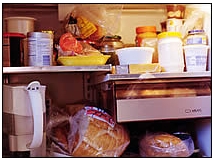 Note:
Do not use your fireplace for cooking until the chimney has been
inspected for cracks and damage. Sparks may escape into your attic
through an undetected crack and start a fire. Note:
Do not use your fireplace for cooking until the chimney has been
inspected for cracks and damage. Sparks may escape into your attic
through an undetected crack and start a fire.
Identify and throw away food that may not be safe to eat.
- Throw away
food that may have come in contact with flood or storm water.
- Throw away
food that has an unusual odor, color, or texture.
- Throw away
perishable foods (including meat, poultry, fish, eggs and leftovers)
that have been above 40 degrees Fahrenheit (F) for 2 hours or
more.
- Thawed food
that contains ice crystals or is 40 degrees F or below can be
refrozen or cooked.
- Throw away
canned foods that are bulging, opened, or damaged.
- Food containers
with screw-caps, snap-lids, crimped caps (soda pop bottles), twist
caps, flip tops, snap-open, and home canned foods should be discarded
if they have come into contact with floodwater because they cannot
be disinfected.
- If cans
have come in contact with floodwater or storm water, remove the
labels, wash the cans, and dip them in a solution of 1 cup of
bleach in 5 gallons of water. Re-label the cans with a marker.
Include the expiration date.
- Do not use
contaminated water to wash dishes, brush your teeth, wash and
prepare food, wash your hands, make ice, or make baby formula.
Store food
safely
While the power
is out, keep the refrigerator and freezer doors closed as much as
possible.
Add block ice
or dry ice to your refrigerator if the electricity is expected to
be off longer than 4 hours. Wear heavy gloves when handling ice.
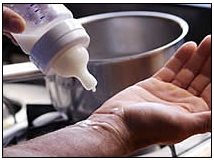 Feeding
infants and young children Feeding
infants and young children
Breastfed infants
should continue breastfeeding. For formula-fed infants, use ready-to-feed
formula if possible. If using ready-to-feed formula is not possible,
it is best to use bottled water to prepare powdered or concentrated
formula. If bottled water is not available, use boiled water. Use
treated water to prepare formula only if you do not have bottled
or boiled water.
If you prepare
formula with boiled water, let the formula cool sufficiently before
giving it to an infant.
Clean feeding
bottles and nipples with bottled, boiled, or treated water before
each use.
Wash your hands
before preparing formula and before feeding an infant. You can use
alcohol-based hand sanitizer for washing your hands if the water
supply is limited
Clean and sanitize food-contact surfaces.
CDC recommends discarding wooden cutting boards, baby bottle nipples,
and pacifiers. These items cannot be properly sanitized if they
have come into contact with contaminated flood waters. Clean and
sanitize food-contact surfaces in a four-step process:
1. Wash with
soap and warm, clean water.
2. Rinse with clean water.
3. Sanitize by immersing for 1 minute in a solution of 1 teaspoon
of chlorine bleach (5.25%, unscented) per gallon of clean water.
4. Allow to air dry.
Source: https://www.cdc.gov/disasters/foodwater/index.html
Shelters
or local public works for information on demolition waste removal.
|
| Sewage |
| Residential
Safety and Clean-up |
| Solid
Waste Disposal |
|
Natural disasters
can lead to huge needs for solid and hazardous waste disposal. Normal
transportation and disposal options will very likely be compromised,
leading to delays in disposal. Emergency Management, Public Works
Departments, and the Health Department will work to select safe
intermediate solid waste disposal locations until the system can
return to normal.
In your household
and business it is important to prioritize waste containment and
disposal according to public health risk as follow:
- Hazardous
chemicals must be contained to prevent leaks to the ground or
water. Use garbage cans, plastic or metal totes, garbage bags,
etc. to provide extra containment to any chemicals that are at
risk of leaking. Make sure you do not place incompatible chemicals
together (do not put bleach and ammonia in the same container).
If chemicals have leaked, scoop up impacted soil or other materials
and contain in a sealed container or bags. Use information provided
through Emergency Shelters or local public works for disposal
options or, if the regular solid waste system is functioning,
use the Household
Hazardous Waste Collection facility for disposal.
- Animal
carcasses should be buried or otherwise disposed as soon as possible.
Ideally carcasses should be buried under three feet of soil. Burial
locations should be located away from surface water and drinking
water sources. In a large disaster, animal carcass disposal locations
may be chosen by emergency management leaders and the Health Department.
Check for information through Emergency Shelters or local public
works.
- Food
waste and other putrescible (rotting) wastes need to be contained.
Waste food from your refrigerator or freezer needs to be contained
and disposed carefully to prevent rodent infestations. If you
have home composting you can add your fruit and vegetable waste
to your compost and mix well. If the routine solid waste collection
system is functioning make sure your food waste is well contained
in heavy bags and covered garbage cans and place for pick up.
If the routine disposal system is down, contain all food waste
that will not be composted in closed leak proof containers and
seek disposal information from the Emergency Shelters or local
public works. If your garbage cans are not adequate for storage,
use your recycling containers and yard waste containers for temporary
storage as they are covered and leak-proof. Bags can then be transferred
out of these containers for solid waste disposal at the time that
disposal is available. In an extreme prolonged emergency, rotting
food waste can be buried under three feet of soil away from surface
water and drinking water sources.
- Moldy
water damaged materials should be contained in plastic bags or
other closed containers and removed from the living space.
These items should not attract rodents and can wait for disposal
at a later date if the solid waste collection system is down.
- Demolition
waste can be piled in locations on your property that will not
pose a threat to children pending removal by public works or other
emergency service providers. Care should be taken with sharps
like broken glass or metals, contain these within other solid
containers if possible. Loose insulation should be bagged. This
waste will not decay quickly and can wait for community wide clean
up for disposal. Check Emergency Shelters or public works departments
for information on demolition waste clean up days.
|
|
|
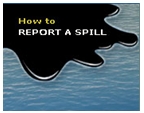

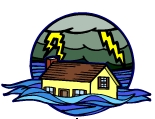 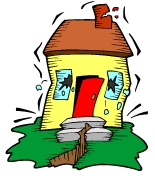
|